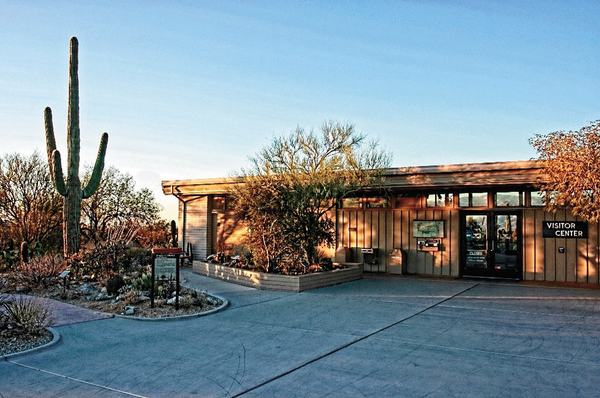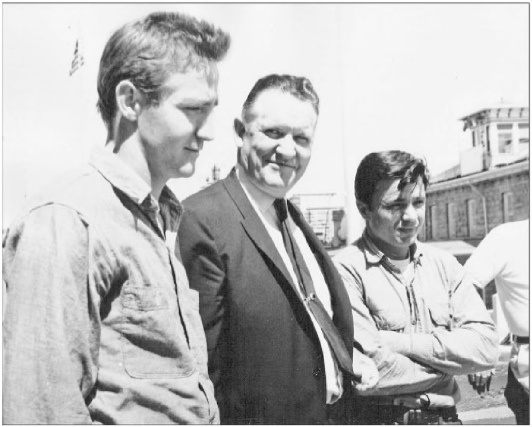Museums often conjure up images of dusty shelves and old artifacts, with signage encouraging patrons to be quiet. However, there are some museums who refuse to fit the mold – from vampire coffins to a collection of almost 1,000 ventriloquist dummies, we’re counting down the 10 strangest American museums we could find.
The Early History of Museums
While public museums are a relatively recent phenomenon, museums have existed in their earliest forms for centuries. The first museum is thought to be from the 5th century BCE, which was started and curated by a Babylonian princess in modern-day Iraq. It’s unknown if this museum would have been open to the public.
In the Middle Ages and the Renaissance, most museums were actually people’s private collections of objects, which they would display only to selected visitors. It wasn’t until the late 18th century that museums were more widely opened to the public, and began catering to society’s needs.
Since then, however, museums have grown exponentially, and account for a large amount of the world’s tourism. Museums like the Met in New York City and the Louvre in Paris see millions of tourists each year, coming from all over the globe to view the galleries’ permanent collections. Perhaps this wide interest in museums is what has inspired some of these odd exhibition halls…
10 of the Weirdest Museums in the US
The Warrens Occult Museum: Located in Monroe, Connecticut, the Warrens Occult Museum was started by Ed and Lorraine Warren, a husband and wife team of paranormal investigators. Ed Warren was one of a few “religious demonologists” in the US, and Lorraine a self-proclaimed clairvoyant and medium. The two investigated some of the most well-known supernatural cases of the 20th century, including the haunting at Amityville, and the possessed doll Annabelle. These cases have inspired movies such as Annabelle and The Conjuring.
The Warrens’ work eventually led them to found the New England Society for Psychic Research (NESPR), and to open a museum with the artifacts they had collected during their travels. Their collection ranges from items like child tombstones reportedly used in satanic rituals and the original Annabelle doll to an organ that plays itself, and a “modern-day vampire’s” coffin. The museum is currently closed due to zoning issues, but will open to the public for special events.
The International Spy Museum: Those who wish to be James Bond might take a trip to Washington D.C., where they can visit the International Spy Museum. The museum was founded by Milton Maltz, who worked as a code breaker for the National Security Museum during the Korean War. Visitors to the museum can follow the history of espionage from the Greek and Roman empires to present, and the museum’s permanent collection pays special attention to the history of American espionage.
There are over 200 spy gadgets and technology artifacts on display in the museum’s permanent collection, and visitors can participate in several interactive exhibits to try their hand at being a government spy. The museum’s board of directors and advisory board includes many former CIA or NSA directors and officials, to help keep the experience as authentic as possible.
The Vent Haven Museum: Located in Fort Mitchell, Kentucky, the Vent Haven museum is billed as the world’s only museum dedicated to ventriloquism. Vent Haven began as the private collection of William Shakespeare Berger. Berger purchased his first dummy in 1910, and continued collecting them until his death in the 1970s. His extensive period of collecting eventually led to erecting a second building separate from his home, simply to hold all of his dummies.
Towards the end of his life, William began to worry about what would become of his collection after his passing. These worries led Berger to turn his collection and other assets into a charitable foundation, thereby founding the Vent Haven museum. Today, the museum holds over 900 dummies, some of which date back to the 19th century. Visitors may visit the museum during a pre-scheduled tour, or on one of the museum’s “open-house” dates.
Bigfoot Discovery Museum: Just south of Felton, California, curious tourists can stop for a moment at the Bigfoot Discovery Museum, whose mission is to “educate the public with the facts about mystery primates around the world.” The museum, which opened in 2006, attempts to prove the possibility of the Sasquatch’s existence, and contains many artifacts in support of the mythological creature.
Visitors to the Bigfoot museum can see “casts” of Bigfoot footprints, a map of various Bigfoot sightings, and even the famous Patterson-Gimlin film, which was shot in the 1970s. The footage is considered to be the most conclusive evidence of Bigfoot’s existence, showing a tall, human-like figure walking in Bluff Creek, California. The museum is a free attraction that is open six days a week – visitors may also donate $25 to the museum to become an official museum member.
Museum of Bad Art (MOBA): Located in the Somerville Theater in Somerville, Massachusetts, the Museum of Bad Art (MOBA) was founded in 1993 with an aim to “bring the worst of art to the widest of audiences.” The museum capitalizes on this mission, marketing their collection as “art too bad to be ignored.” The permanent collection has approximately 600 pieces, 50-70 of which are on display at any given time, according to the museum’s website. The museum was inspired by one painting, entitled Lucy in a Field of Flowers, which was rescued from a trash bin in Boston. After the rescue of the painting, more “bad art” was sought out to complete the collection. Admission to the museum is free with a movie ticket to the theater.
The International UFO Museum and Research Center: When looking for close encounters of the third kind, stop off in Roswell, New Mexico, at the International UFO Museum and Research Center. The museum was partially founded by First Lieutenant Walter Haut, a public relations officer for the Air Force during the 1947 Roswell incident. Haut, who released the first report that the Air Force had found a “flying disc” that was later retracted, maintained until his death that he had seen alien bodies and debris during the incident.
At the museum, visitors can view several exhibits dedicated to the Roswell incident, as well as an extensive library on the presence of aliens and UFO’s. Admission to the museum is $5, and the museum is open seven days a week. While it is currently housed in a former movie theater, there are plans for the museum to move to a larger space in the future.
Museum of Death: Where can you view crime scene photos, a suicide machine, and the severed head of a serial killer all at once? The Museum of Death in Hollywood, California, is a good place to start. Founded in 1995, the Museum of Death espouses itself as a self-guided tour “to fill the void in death education in the USA.” It was originally located in a San Diego mortuary, but has since moved to Hollywood.
In addition to their more gruesome attractions, the museum also features the world’s largest collection of serial killer artwork, and admission to the museum costs only $17. If Hollywood seems a bit far away, don’t worry – the museum opened a second location in New Orleans, Louisiana in 2014.
International Banana Museum: If fruit is more your style, consider checking out the International Banana Museum, located in Mecca, California. While it’s not clear when the banana museum opened, it is claimed to have 20,000 banana-themed items, ranging from salt and pepper shakers to a banana-shaped record player. The museum is primarily the private collection of the museum’s owner.
In addition to all their banana-themed memorabilia, visitors can enjoy a drink at the “banana bar,” where they can try banana milkshakes, or banana soda ice cream floats. The museum also has different banana flavored treats. While the museum is typically open during the weekends, it’s recommended you call ahead before traveling out.
National Museum of Funeral History: Located in Houston, Texas, the National Museum of Funeral History is the country’s largest museum dedicated to the funeral service, and the practice of embalming. Founded in 1992, the museum was the brainchild Robert L. Waltrip, a leader in the funeral home industry. With over 30,500 square feet of exhibition space, the museum holds 14 permanent exhibits, which range from Egyptian embalming rituals to showcasing antique hearses. The museum’s main feature, however, is its exhibit Celebrating the Lives and Deaths of the Popes, which details the traditions of papal funerals. The exhibit was a collaboration between the museum and the Vatican, to provide as much authenticity as possible. Open daily, there is a small admission fee to tour the entirety of the museum’s collection.
The Circus World: Founded in 1954, the Circus World Museum celebrates the history of the Ringling Brothers Circus, and American circus history at large. The museum is located in Baraboo, Wisconsin, the former headquarters for the Ringling Brothers Circus, which was the largest American circus company until its closure in 2017. The museum is housed on the former Ringling grounds, which have been declared a National Historic Landmark. The museum’s exhibitions include circus items ranging from wagons and posters to hand bills and show advertisements.
In addition to its exhibitions, the museum also runs live circus performances throughout the summer season. The property also contains an extensive library, which claims to be the “world’s foremost research facility for circus history,” which in-person and online visitors alike can explore. Tickets to the museum vary depending on season, and it is open seven days a week to visitors.



